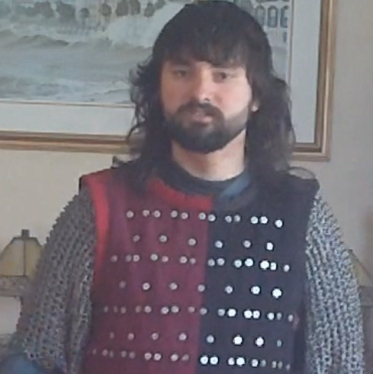 It looks like studded armour, but they are in fact
It looks like studded armour, but they are in fact
rivets holding in a most… Riveting array of plates!
Can’t afford shiny new plate armour? Maybe you should have smaller plates fastened inside a coat to make Brigandine. This poor man’s cuirass is the sort of sturdy protection worn from around the late 1300s to late 1400s.
Brigandine works on the same principle as plate armour, steel lames fitted around the body to form solid protection. Indeed, debatably another name for the armour would be the ‘coat of plates’, but the coat part is important in that the overlapping pieces are secured to a coat or other similar garment by rivets. Although it is most commonly used for torso protection, it can also be suitable for rigid protection on limbs as well (again like plate armour can).
I haven’t seen any historical or reproduction pieces that had the coat itself act as much armour with regards to toughness or padding, but in concept it could certainly make sense especially if certain areas were more rigid such as over the chest region (leaving the belly flexible for free movement). Speculation aside, brigandine and coats of plates are seen in representations of more common men at arms as well as effigies of true knights, suggesting this armour was popular with lower and upper classes, presumably with differences in certain aspects such as the garment being made of fine silk and velvet instead of rough wool and linen.
On a more stupid or humorous note (depending on your opinion), it is fair to assume that seeing depictions of brigandine is what caused people to misinterpret the design and think that ‘studded armour’ existed historically just as a garment with rivets being used on their own as some sort of armour. I produced a video explaining how such items would be impractical to say the least. If you should encounter such an individual who still believes studded armour is real, please advise them that they are wrong, WRONG. Many thanks.